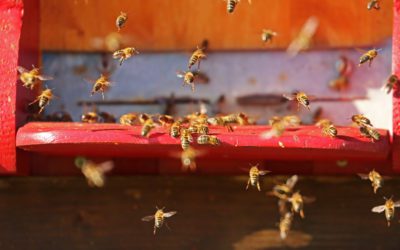Sustainable Fashion and Where to Shop It
26
JUNE, 2023
By Lizzy Erwee
In the spirit of World Environment Day on the 5th of June and its focus on #BeatPlasticPolution; as well as our gradual transition into Plastic Free July, we‘re zoning in on a conversation which has been all the rage online – fast fashion and its harmful effects on the environment.
Fashion is freedom, fashion is quirky, fashion is personal and fashion is reflective. But more than anything fashion is fast. With seasonal trends turning weekly and a consumeristic society heavy on expressing themselves through runway couture and “outfit(s) of the day” social media trends, it’s hard to say no to the new.
The reality is that we’re all guilty, myself included. We have become accustomed to wanting more, leaping for it and letting it win. We are creatures of habit, and the world of social structures and habits governs our purchasing behaviour when it comes to the consumption of clothing. The idea of “normal behaviour” in the fashion realm has taken us down a perilous path where we tend to accept fast fashion as “just the way we are”, when we should be advocating against it.
No doubt you’ve heard the stats before and maybe they lingered, maybe they didn’t, so here they are as a reminder.

Trends Leading to Landfills
Fashion is a beautiful means for artists, stylists, creatives and individuals to make a statement and produce something that makes people feel good, but this doesn’t mean it has to be fast and fake.
Fashion is marketed all too well, pushing new looks and gaining more likes every minute. Formulating a deep desire for the things that in a few weeks, are going to end up fraying and falling apart. Trending for two minutes, and off to the landfills for a lifetime. We buy, wear and waste. We buy, don’t wear and still waste.
Some may argue that you do get those good buys, the ones you wear non-stop, and wish you had multiple of. The go-tos, the dailies and the best friends. These favourites, like all fast-fashion items, often don’t last all too long either. It says it in the name, fast. With poor-quality materials and poor production, our clothes are bound to live an ephemeral life. Despite its inventiveness, joy, and limitless prospects, the fashion industry does, regrettably, have an impact on the environment and a large one at that.
Tasteless vs Timeless
From raw to reckless, materials such as polyester, nylon, acrylic and polyamide all contain plastics that are shed in the form of micro-fibres when washed. The majority, actually a whole 60% of our clothes are made from plastics (synthetic fabrics that is). Beyond the fact that tonnes of these plastic-built garments end up in landfills and wash harmful dyes into our waterways, those that are worn and kept end up polluting land and waterways alike. Their microplastics float their way into drain waters and meander on into the sea, joining the plastic islands floatings in our oceans. All from washing our clothes.
In a time where people are extensively expressive and bold, colour is everything. It complements, it’s funky and it’s striking, however, it’s dulling the nature around us. Dying, treating and chemical bathing are some methods used during the creation of coloured garments, leaking harmful chemicals into fresh waterways such as rivers and streams and yet again, into our oceans.
Although no one fabric is perfect or can tick all the boxes, some are evidently better than others. From the sourcing of materials, production and logistics to working hours, pay and treatment of garment workers, there’s a lot to think about before you swipe your card at the till.
Luckily, there’s a guide and friend, sustainable fashion, that embodies everything that is right in the fashion world. Encompassing different approaches such as slow fashion, conscious fashion, ethical fashion and circular fashion. Terms that share one core value, to protect nature and its people for generations to come.
This movement has gained great traction and has seen the shifting of consumers’ mindsets towards one where clothes are designed, produced and distributed in an environmentally-friendly manner, simply put, a way that can be sustained.
Our local fashion loves
Studio Candor
Groovy and funky garments made from deadstock, cut-offs and odds and ends. Studio Candor cares for the forgotten, loves the lost and sculpts for the environment. Finding and fiddling their way through materials from all walks of life, they slowly curate unique, limited and beautiful items from anything they can get their hands on, literally!
Eat Your Greens
If anything could scream Cape Town and local in one, it would be this brand. Locally sourced materials designed for consumers’ comfort and style. A brand that sources organic cotton, hemp and linen for the future of comfort apparel. Owned and run by some cool Cape Town kids, this small slow-fashion brand is easily spotted walking down Kloof, Bree and at any quirky weekender event with a distinct circular “Eat Your Greens” label paired with something thrifted.
U Be You
If it wasn’t obvious enough, they are unconventional, eccentric and inclusive. A brand that welcomes all with open arms and encourages self-expression. With this in mind, the brand aims to create items that will allow its wearers to continuously beam individuality for time to come. Their range of sustainably made garments includes limited edition collections, deadstock fabrics and zero-waste designs.
“We try to be as sustainable as possible by having a made-to-order system which has a slower production schedule, includes limited edition collections, deadstock fabrics and zero-waste design” – U Be You

Images sourced from: Studio Candor, Eat your Greens, U Be You.
Sama Sama
Elegant, calm and pretty cute. Their simple approach to fashion sees the creation of gentle, mix-seasoned designs and tender production. Priding itself on using “ ONLY natural materials and aim to work with only locally sourced or low impact materials”, Sama Sama is a passionate clothing brand focused on providing comfort and care for both its customers and the planet.
Simon and Mary
One of our stylish partners, Simon and Mary are innovative sustainable business makers in the apparel industry. Their uniquely crafted hats are made to last a lifetime and have a kind production line that has been meticulously planned out to limit its environmental impact. This includes utilizing rainwater from their boiler, which in turn saves 30 000 litres of water per month! What’s more, they focus on using sustainable materials such as cactus leather!
Hemporium
Another partner that is all in with the sustainable fabric shebang is Hemporium. They say it best, “Life is better with hemp.” With a variation of products, their clothing line sees the likes of a women’s and men’s range made with industrial hemp. From t-shirts, dresses and bags, to hemp cosmetic products, Hemporiums products are long-lasting, innovative and kind to nature. They also sponsored some of our lovely Greenpop tee shirts, that you’ll spot our team flaunting at different events.

Images sourced from: Simon and Mary, Sama Sama, Tsebo.
The Future of Fashion
Sustainable fashion is a movement that fashion houses can either choose to be a part of or ignore. It is a movement consumers can vote into or vote out of. It’s a choice for brands, businesses and individuals. It is not the responsibility of one house but all. Fashion holds so much potential for creativity, science, and joy that we can’t just say no, but we can learn to adapt, change the narrative and be selective with our choices.
Choosing a product with less environmental impact isn’t hard but saying no to the ones that pollute, destroy, burn and poison Mother Nature is. We’re confusing, misunderstood, emotional and impulsive human beings that make mistakes, choose wrongly and mess up. However, we are also intellectual, empathetic and kind. We are a list of wrongs and rights, but we have the choice to change and adjust our practices, thinking and values for something better, for the future of fashion and our creativity.
Students Learn About Groundwater at the Green Point Urban Park
The WWF Groundwater Awareness Campaign culminated in a celebratory field trip for 38 lucky learners to the Green Point Urban Park.
What is Bark Stripping?
Bark stripping is the illegal stripping and harvesting of the bark of a tree for individual profit. Learn more about this issue below.
World Bee Day: What’s the Big Buzz around Bees?
World Bee Day: What’s the Big Buzz around Bees?19 MAY, 2021By Reekelitsoe MolapoWorld Bee Day is the global annual celebration of bees and the role they play within our ecosystems. On December 20th 2017, The United Nations General Assembly adopted by consensus a...
Greenpop Foundation NPC is a registered non-profit organisation. Registration Number (NPO): 151-411 NPO.



